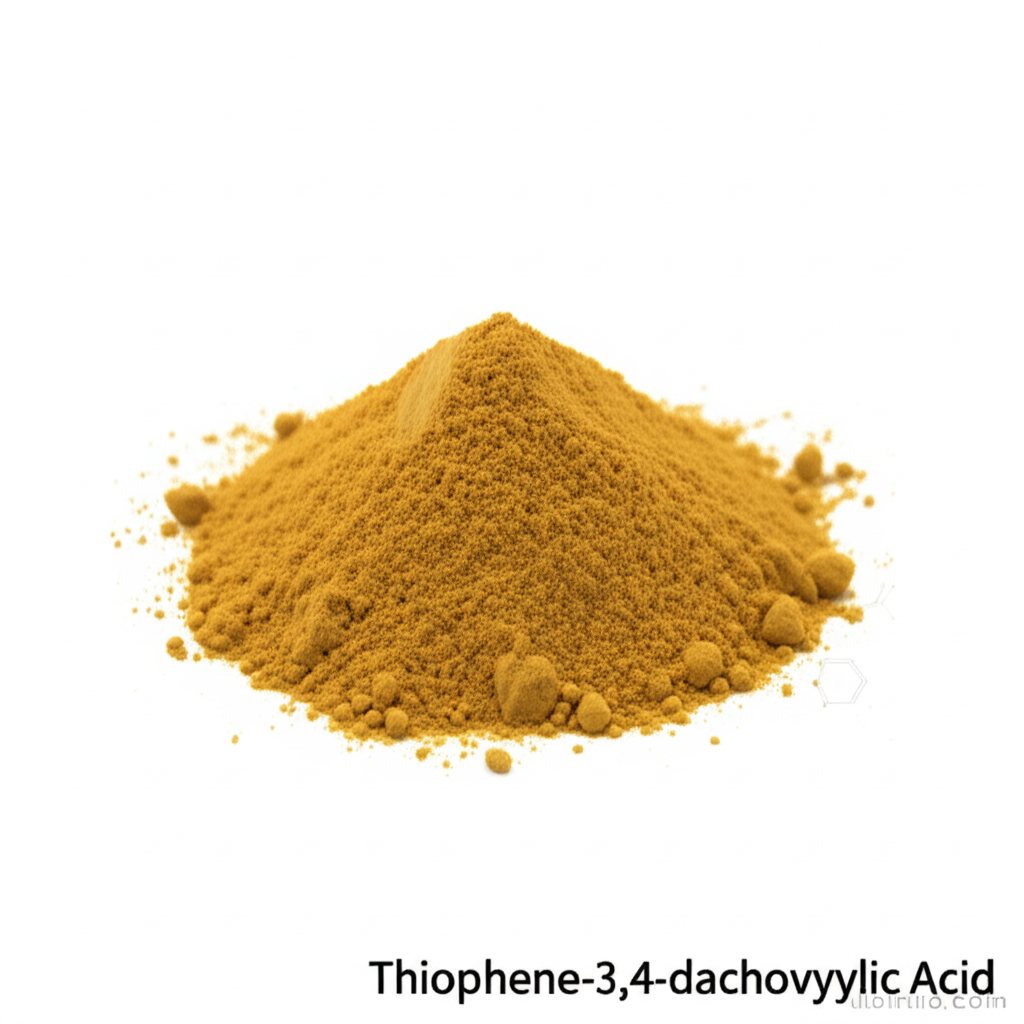Thiophene-3,4-dicarboxylic Acid: Synthesis, Properties, and Applications in Organic Chemistry
Explore the critical role of Thiophene-3,4-dicarboxylic Acid in modern organic synthesis and materials science.
Get a Quote & SampleProduct Core Value

Thiophene-3,4-dicarboxylic Acid
Thiophene-3,4-dicarboxylic Acid is a vital intermediate in organic synthesis, prized for its ability to introduce sulfur-containing functionalities into target molecules. It serves as a key building block for a wide array of applications, including the development of polymers, pharmaceuticals, and cutting-edge organic electronics materials.
- Discover the versatility of Thiophene-3,4-dicarboxylic Acid as a key intermediate for the synthesis of heterocyclic compounds and complex organic molecules.
- Leverage its unique properties to synthesize novel compounds for a wide range of applications, highlighting its role in organic synthesis.
- Understand the chemical precursor for organic electronics applications that this compound enables.
- Explore its utility in the preparation of dibromo thienofuran dione and other specialized compounds.
Advantages Offered by the Product
Enhanced Molecular Design
The presence of sulfur-containing functionalities, a key characteristic derived from Thiophene-3,4-dicarboxylic Acid, significantly enhances the desired properties of synthesized molecules, making it invaluable for specialty chemicals for electronics.
Versatile Reactivity
Thiophene-3,4-dicarboxylic Acid readily undergoes transformations like esterification, amidation, and coupling reactions, offering synthetic chemists a broad scope for molecular construction and tailoring properties for specific needs.
Foundation for Advanced Materials
As a crucial chemical building block, it forms the foundation for creating advanced materials, especially in the realm of organic electronics and novel polymers, driving innovation in material science.
Key Applications
Organic Synthesis
Thiophene-3,4-dicarboxylic Acid is a fundamental component in various organic synthesis pathways, enabling the creation of complex molecular structures.
Organic Electronics
Its use as a chemical precursor for organic electronics materials is pivotal for developing next-generation electronic devices.
Functional Materials Development
The compound is integral to the preparation of diverse functional materials, including polymers and pharmaceuticals, showcasing its broad applicability.
Heterocyclic Chemistry
Thiophene-3,4-dicarboxylic Acid plays a key role in the synthesis of various heterocyclic compounds, expanding the library of accessible organic molecules.
